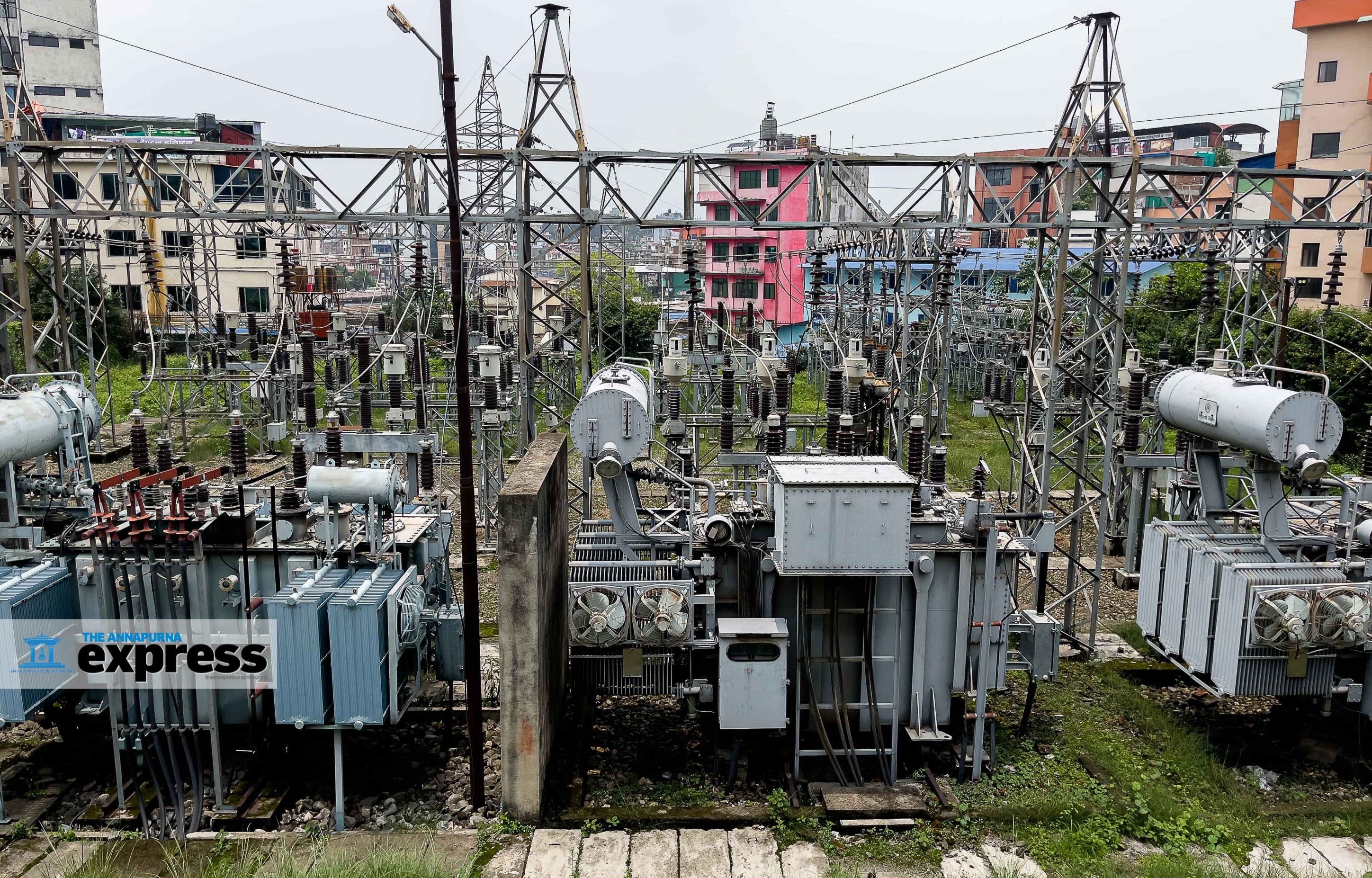Sixty-four percent of Nepal’s industries are compelled to install diesel generators in light of the frequent power outages, according to a research paper by the Confederation of Nepalese Industries (CNI) published in May 2022. Generator-use, the paper says, increases the industries’ monthly operation costs by an average of 5.3 percent.
Nepal currently exports 364MW surplus electricity a year to India but it cannot meet its own domestic energy needs.
Suresh Bahadur Bhattarai, spokesperson for the Nepal Electricity Authority (NEA), the country’s primary energy producer and sole transistor and distributor, disagrees with the CNI report.
“Yes, there are power outages in industrial areas but I doubt 64 percent of Nepali industries have to rely heavily on generators,” he says. “The fact is, new industries are facing shortages due to the lack of transmission lines.”
The 2017 Electricity Demand Forecast Report by the Water and Energy Commission Secretariat, under the Ministry of Energy, projected the country’s electricity demand to shoot to 5,800MW by 2025 and to 9,000MW by 2030. These projections were based on the predicted long-term GDP growth rates, as forecast by the International Monetary Fund (IMF).
But the government’s projections do not add up. According to the report, the demand should have reached 2,500MW by now. But Nepal’s current electricity demand stands at around 1,800MW in peak hours (mornings and evenings) on working days and around 1,100MW in base hours (daytime). Likewise, the demand drops to 700MW in off-hours (11 pm-5 am).
Also read: A snapshot of Nepal’s energy ecosystem
Nepal’s most power-dependent sectors are manufacturing, followed by households, service industry and transport.
The government also predicts an average 10 percent increase in annual electricity demand, which is also not in keeping with the reality.
Energy experts say national economic growth and energy consumption are directly proportional. In other words, energy demand will increase only if the GDP growth rate also goes up.
Nepali industries have asked for a yearly average of 400MW in bulk electricity to meet their needs, which the NEA has been unable to supply, says the CNI.
Bhattarai, the NEA spokesperson, maintains that building more transmission lines is the answer.
“A few transmission lines are in the pipeline. When they are ready, a lot of the supply-demand discrepancies should be resolved,” he says.
According to him, the NEA is currently conducting feasibility studies for the 90-km Lamahi-Chhinchu, 130-km Sitalpati-Inaruwa, and 115-km Arun Hub-Dudhkoshi transmission lines. The carrying capacity of these lines is 4,400MW.
“Slowing down progress on these lines are the various political, environmental, and financial hurdles,” adds Bhattarai.

Mukesh Kafle, former managing director of the NEA, blames the current leadership at the authority for the failure to meet the industries’ demands.
“During my tenure, I treated the whole country as a single house. There was uniform load-shedding as a result,” he says. “The current leadership at the authority, however, has ignored the industries in order to meet household energy needs.”
Kafle claims Nepal is producing enough electricity for everyone.
But over the years the nature of the challenge in electricity demand and supply has changed.
“We are in a situation whereby we need to increase the demand now. We are on the verge of an electricity demand-deficit,” Kafle adds. “Even if the electricity authority meets the current demand of the industries, we will still have a surplus.”
This year alone, the government has signed power purchase agreements on 7,000MW with different private producers. In the next couple of years, this will be added to the national grid even without a corresponding increase in demand.
Shailesh Mishra, CEO of Independent Power Producers Association, shares Kafle’s view.
“I also don’t see any problem with electricity production,” he says. “But despite our comparably low demand, we are still unable to adequately power-up our industries due to our poor distribution lines.”
The latest budget for the fiscal year 2022/23 aims for a median GDP growth rate of around seven percent. In that case, the electricity demand is expected to see a 14 percent and a 28 percent bump by 2025 and 2030 respectively.
Nepal can produce around 42,000MW of electricity. If the country grows at around nine percent a year, it will be in a place to utilize its maximum capacity by 2040.
Also read: Is our energy ecosystem consumer-friendly?
The electricity sector has at least conducted some studies and formulated relevant plans and policies. Not so with petroleum. The Nepal Oil Corporation (NOC), the country’s sole importer and distributor of petro products, has undertaken no such long-term studies.
“In keeping with previous trends, the NOC assumes that the demand for diesel, petrol, and aviation fuel would all increase by around 10 percent a year, while the LGP demand would go up by 20 percent a year,” says Binit Mani Upadhyay, the spokesperson of the corporation. “As we import based on current demands, there have been no other assessments.”
In the fiscal year 2020-21, the NOC sold 587,677kl petrol, 1,698,427kl diesel, 70,400kl aviation fuel, and 477,752MT LPG. (The expected import figures for 2025 and 2030 are listed in the table alongside.)
A 2017 Asian Development Bank report ‘Nepal Energy Sector Assessment, Strategy and Road Map’ forecast a 1.9 percent annual increase in the country’s energy demand through 2035. This was slower than the projected GDP growth rate of 3.7 percent for the same period.
Likewise, the share of electricity in the energy demand of the industry sector would increase from 25 percent in 2010 to 35 percent by 2035, or by 5.4 percent a year. At the same time, the share of oil and coal will increase by 4.3 percent and 3.7 percent, respectively.












